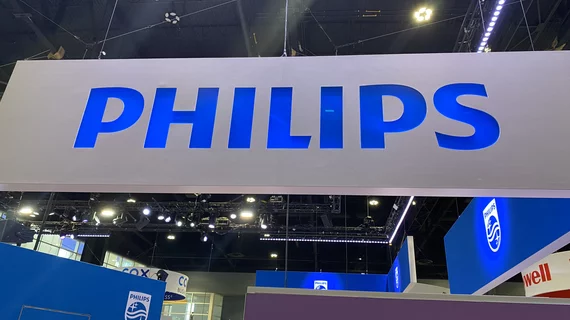Philips' latest collaboration could make xenon MR imaging more widely available
Philips’ latest collaboration is set to improve imaging of patients with complex respiratory conditions by advancing the state of hyperpolarized xenon gas MRI.
In alliance with Polarean, Philips is rolling out a new MR system with advanced multi-nuclei imaging capabilities that will offer radiologists a detailed evaluation of lung ventilation using xenon gas as a contrast agent. The Philips 3T MR 7700 and Polarean XENOVIEW (xenon Xe 129 hyperpolarized) combo is making its debut this week at the 2023 International Society for Magnetic Resonance in Medicine Annual Meeting and Exhibition in Toronto, Canada.
When inhaled by patients, XENOVIEW gives radiologists a detailed assessment of patients’ vascular microstructure, ventilation and gas exchange in the lungs and extends visualization into some of the smallest airways in the lungs. Xenon imaging is not yet a mainstay in respiratory diagnostics, but it grew in popularity following the height of COVID when patients began to present with long-lasting respiratory symptoms of the virus.
Xenon imaging does, however, have utility beyond COVID—it can be used to monitor an array of pulmonary conditions like chronic obstructive pulmonary disease, asthma, cystic fibrosis, bronchopulmonary dysplasia and more.
Richard Hullihen, CEO of Polarean, spoke of the potential of expanding xenon imaging capabilities in a prepared statement on the companies' collaboration.
“... we are excited to enter this agreement with Philips. Their strategic focus on patient and workflow-centric multi nuclei imaging in their 3T system provides a uniquely capable platform for clinicians to extend their assessment of lung ventilation,” Hullihen said. “By deploying this novel technology to visualize otherwise unobtainable clinical information using MRI technology, MR imaging can now be expanded into pulmonary medicine, providing a quantitative tool to help clinicians and the patients they treat.”
Ruud Zwerink, general manager of magnetic resonance and digital X-Ray at Philips, called the collaboration, which is set to make xenon imaging more widely available, a “major breakthrough in improving the diagnosis and management of respiratory disease.”
XENOVIEW received FDA approval earlier in 2023. XENOVIEW-enhanced MRI exams are indicated for the evaluation of lung ventilation in adults and children age 12 years and older.
To learn more, click here.

